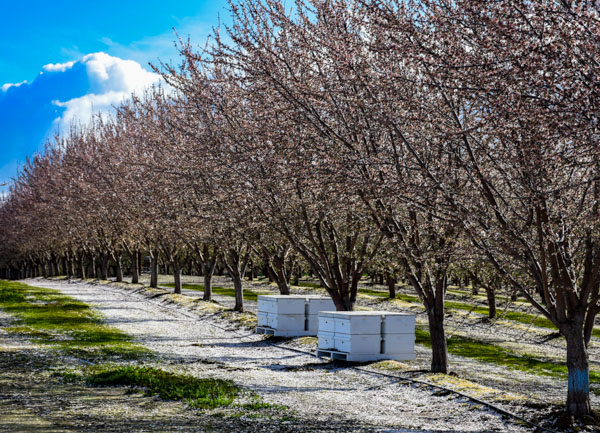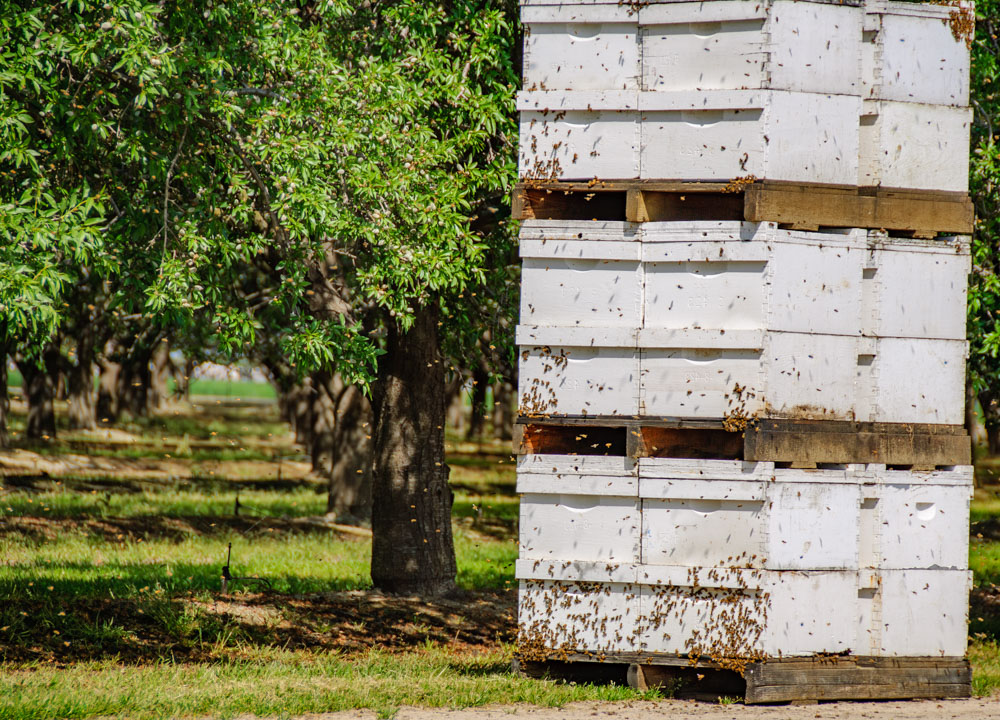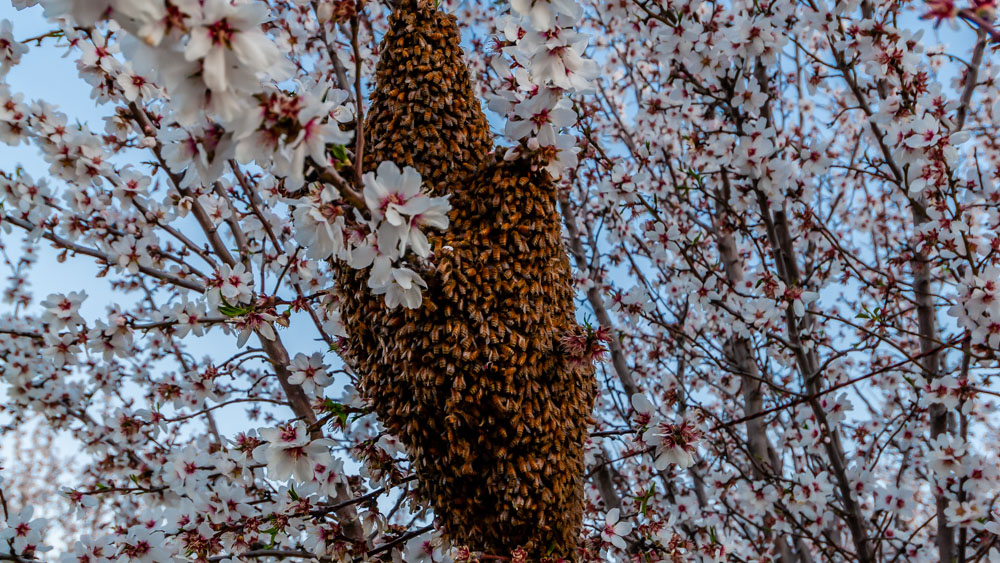
Almonds are one of the most popular and nutritious nuts in the world, but they also depend on honeybees for their production. Most established almond tree varieties are not self-pollinating. They need some extra help to pollinate flowers and start the process of growing nuts. Honeybees provide that vital link. During almond tree pollination, honeybees move from tree to tree searching for pollen and nectar and pollinating almond blossoms along the way.
But how many beehives are needed per orchard, where do I place the hives and how do I provide better care for them? In this blog post, we will explore these questions and more.
How many beehives are needed
The number of beehives needed per acre of almonds depends on factors such as:
- Size and strength of the bee colonies
- Density and diversity of the almond varieties
- Almond tree age
- Weather conditions
- Beehive availability
Experts recommend 2–4 beehives per acre (4-7 beehives per hectare) for optimal pollination. Each hive should have at least 10–20,000 bees to ensure enough foragers.
Some growers may opt for one beehive per acre (3 per hectare) to maximize pollination and yield, but this may come at a higher cost and risk. More hives means more competition for pollen and nectar, which may reduce the quality and quantity of honey produced by the bees. More hives also means more exposure to pests, diseases, and pesticides, which may harm the bees’ health.
Where to place beehives during almond tree pollination
The placement of beehives in the orchard is also important for pollination efficiency and bee welfare. Ideally, hives should be distributed evenly throughout the orchard, rather than clustered in one spot. This will ensure that all trees receive adequate pollination and bees do not have to fly too far to find flowers.
Hives should also be placed in shaded areas to protect them from direct sunlight and hot temperatures, which may stress the bees and reduce their activity. Hives should also have access to clean water sources, such as troughs, ponds or water buckets, to prevent dehydration and overheating. Water should be provided near the hives, but not too close to avoid drowning or contamination.
Hives should also be placed away from sources of disturbance, such as roads, machinery, or animals. These may cause noise, vibration, or physical damage to the hives, which may agitate or injure the bees. Hives should also be placed away from sources of pesticide exposure, such as spray drift or contaminated water. Pesticides may impair the bees’ behavior, learning, memory, or immune system, or even kill them.
Bee care before, after and during almond tree pollination
Here are some tips on how to provide a better care for honeybees before, after and during almond tree pollination:
- Rent healthy and strong hives from reputable beekeepers. Make sure the hives have enough food, water, and ventilation. Avoid overcrowding the hives or placing them too close to each other.
- Communicate with the beekeepers, pest control advisers and pesticide applicators to ensure that no harmful chemicals are used during the bloom period. Follow the Honeybee Best Management Practices (BMPs) developed by the Almond Board of California.
- Provide a diverse and natural forage for the honeybees before and after the almond bloom. Plant other bee-friendly flowers, such as clover, lavender, sunflower and buckwheat, to supplement the bees’ diet and reduce competition with native bees.
- Monitor the hives for signs of pests, diseases, and parasites, such as mites, fungi, viruses, and bacteria. Treat hives with organic or natural remedies, such as essential oils, garlic, or vinegar. Avoid using antibiotics or synthetic pesticides that can harm the bees or contaminate the honey.
- Respect the natural behavior and needs of the honeybees. Do not disturb or stress them unnecessarily. Allow them to fly freely and pollinate at their own pace. Do not force them to pollinate self-incompatible varieties or self-pollinating almonds that do not require honeybees.
How AgNote can help
If you are an almond grower, you know how important almond tree pollination is. But do you know where your bee hives are in your orchard? With AgNote farm management software, you can easily track the location of each hive using the scouting functionality. You can mark on the map where you placed the hives and take pictures of them to monitor their condition. AgNote helps you keep track of your bees and optimize their pollination performance. AgNote is an excellent tool for almond growers who care about their bees!
You can register now for a free seven-day trial and check it out on how AgNote will help you to manage your permanet crop orchards.
Conclusion
Almond tree pollination is a vital service provided by honeybees that benefits both bees and growers. By following these tips, your almond tree flowers will develop into flourishing nutlets. Remember that honeybees are not only essential for almond production, but also for many other crops and ecosystems that depend on their pollination services.

